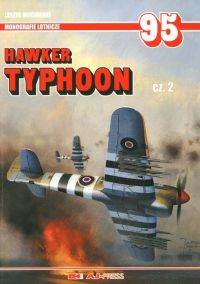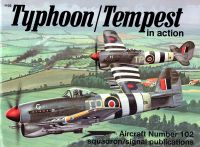Airfix | 1/24 Hawker Typhoon Mk IB
Reviewed by Kevin Williams
I decided at the outset to remove myself from the somewhat typical and lengthy description of the Typhoon technical development and operational history. I will however say that I personally believe that for all the work the Typhoon squadrons performed, be it supply interdiction, communications, transportation (both road and rail), destruction, as well as the assaults directly against armor formations, that they deserve to be recognized for the tremendously important role they had to play during the war, and the fact that they performed in that role quite admirably. (Since this is more of an in-box review than a build review, I have no photos of assembled sub structures, so should be considered more of an overview of the various areas I thought might be of interest.)
Packaging/box
Nice sturdy box, plenty capable of holding the weight of this kit.
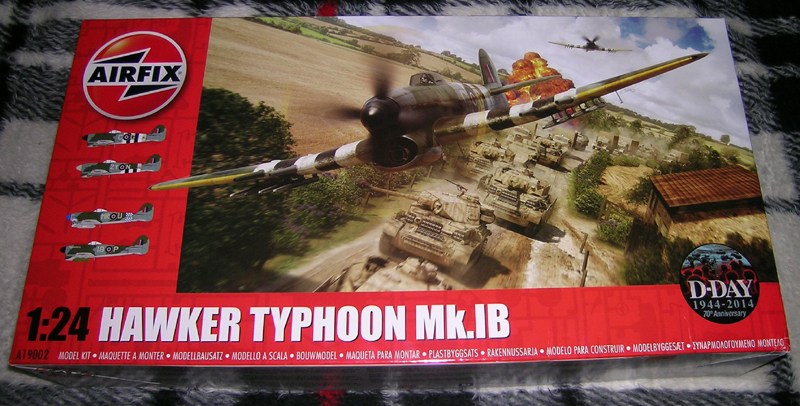
Instructions
Instructions are depicted in a sort of pictographic way, making assembly a straight forward process, similar to what WNW provides in their kits. One thing I find a bit distressing though, is the complete lack of a parts chart. Given that there are a jillion parts to hunt down for the various assemblies, that would have been nice. (Perhaps this is an opportunity for a "How to Find Your Hawker Typhoon Parts" book.)

Decals
Markings are provided for four Typhoons:
- MN666, C G, 121 wing
- DN2252, ZY N, 247 squadron
- MP1197 (shark mouth), MR U, 245 squadron
- RB389, I8 P, 440 squadron
Decals appear to be in register, quite opaque, and well detailed, with complete stenciling. Printed by Cartograf, they're sure to be excellent.
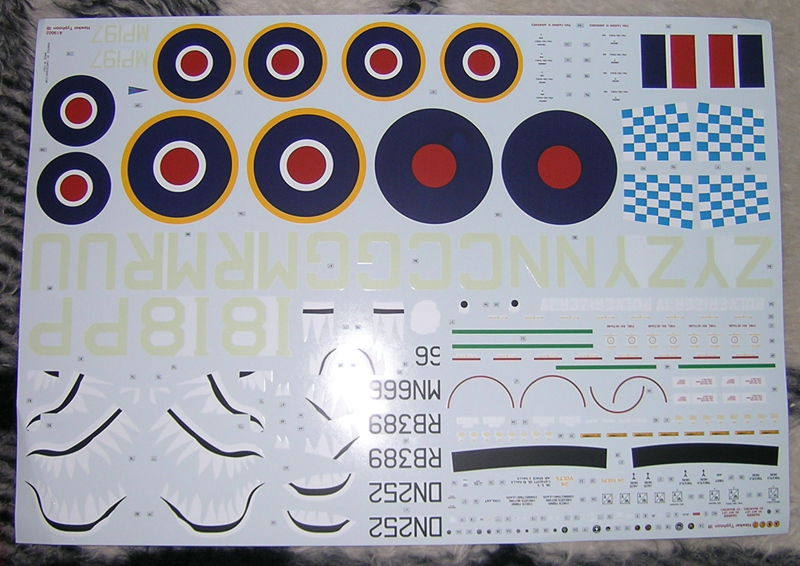
(A word about ID stripes vs Invasion stripes: As a general rule, most Typhoons were found with black and white alternating ID bands on innermost portions of lower wings, three white, and four (narrower black). Invasion stripes on the other hand, were three white, two black, and all even width, and should not be confused with ID stripes.)
Instructions amendment:
It's come to my attention that Airfix has issued an amendment to the kit instructions. That amendment is depicted below. "It has been noted that the instructions for the Hawker Typhoon MkIb 1:24 - A19002 omitted the attachment method for the Coffman starter inlet pipe, part C14."
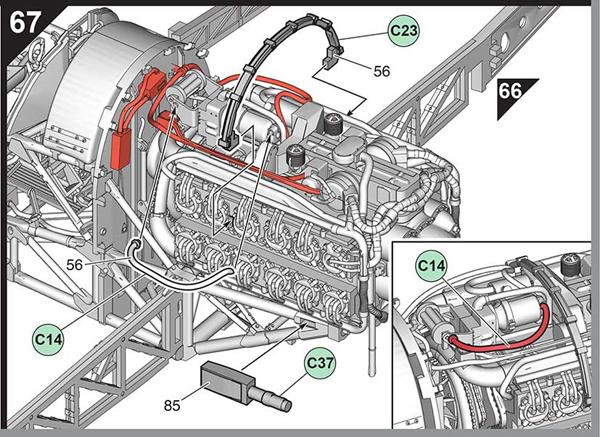
Airframe: The vaunted “stressed skin” effect
Now that I have the kit "in hand", I can say that the stressed skin effect on the airframe, where present, seems to be very subtly done, and adds a certain "character" to the model that I greatly approve of.
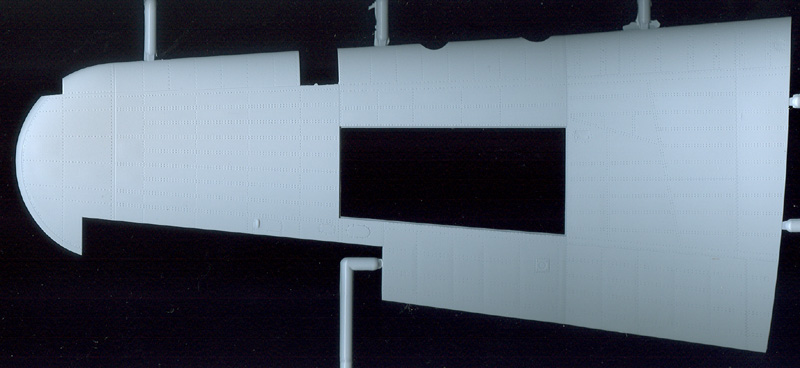
One area that I saw in the early test shots that I had hoped Airfix would have changed, is the area where the reinforcing plates are located. Perhaps because of my ham-fisted approach to building, I anticipate this to be a real pain to clean up, though detailing appears to be accurate in shape, and pretty much scale representative.

While I'm at it, Two different tail assemblies are included, but instructions make no mention of which is which, so once again, using good references will be necessary.
Cockpit
Not a lot to be said here, save for the notion that if one takes his time, cockpit will build into an outstanding representation, and is a model in its own right, very comprehensive and very well detailed.
Canopy/windscreen
As is already familiar to most by now, canopy has an elliptical depression in rear port upper side, and my example was also cracked at a sprue gate, at the top of the windscreen interface area. Windscreen also has a molding defect right smack in the middle of the frontal piece, but with some extreme care, can probably be sanded/polished out. This (to my mind), is the single largest weakness of this kit.
Engine
The Engine is another area that seems to be very well detailed, and will look excellent on those models where the builder decides to leave it exposed, (I will not.). One thing I found distressing though, is that all exhaust stubs (probably the most visible part on my effort when the time comes, are interconnected right at the welded seam representation, making clean up a real pain, (hopefully Barracuda will come to the rescue here). The good news is though, that Airfix has seen fit to thoughtfully include two different styles of exhaust shrouds, (though these are mentioned nowhere in the instructions that I can find), and if used, will require some real attention be paid to the openings, as my examples have irregular openings that are not consistent one to the other, and will look much better once thinned for scale appearance.
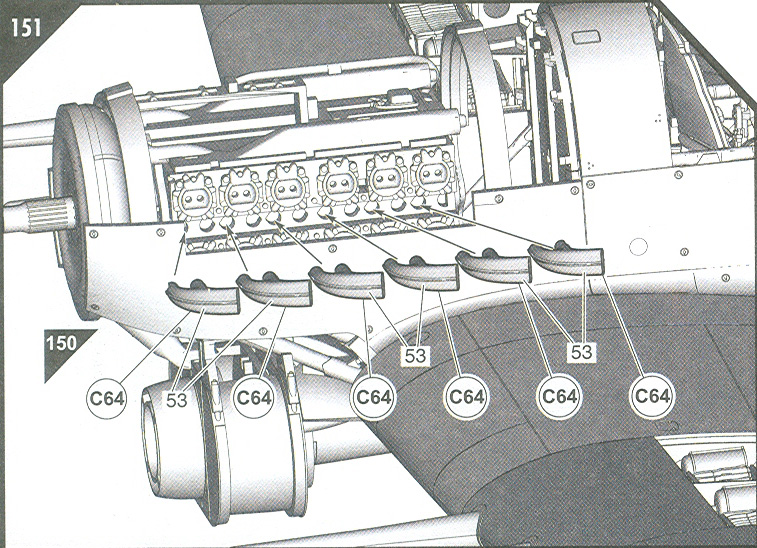

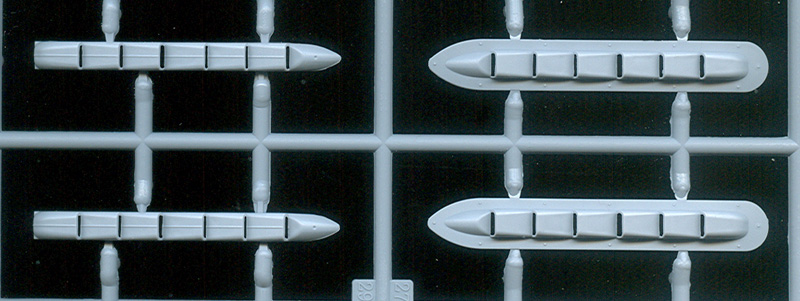
Radiator/intake
Intake parts are molded well, with the possible exception of the (sometimes used), round extension (for lack of a better word), Part #17, which appears to me to be too thick. Radiator cooling area might benefit from some AM replacement screens, but I don't believe they're really necessary, as it appears a very nice result can be had with a careful wash technique.
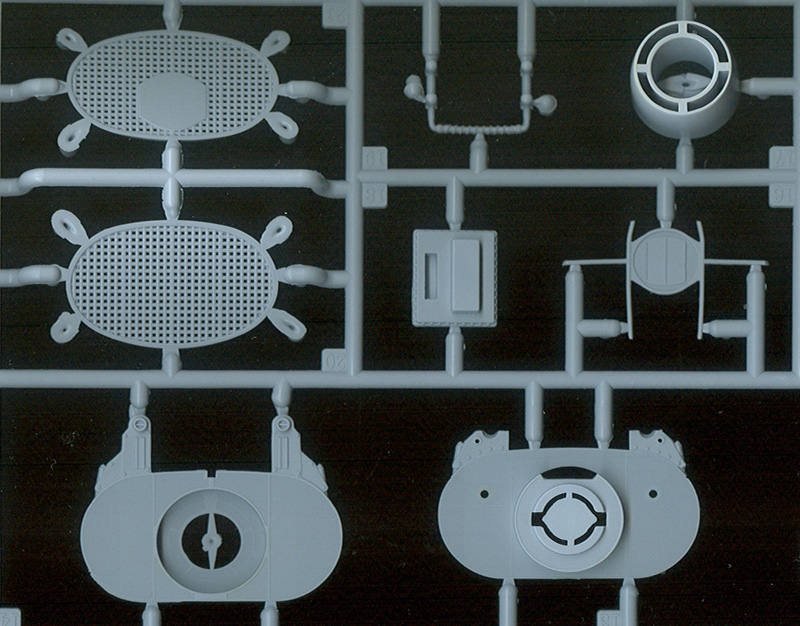
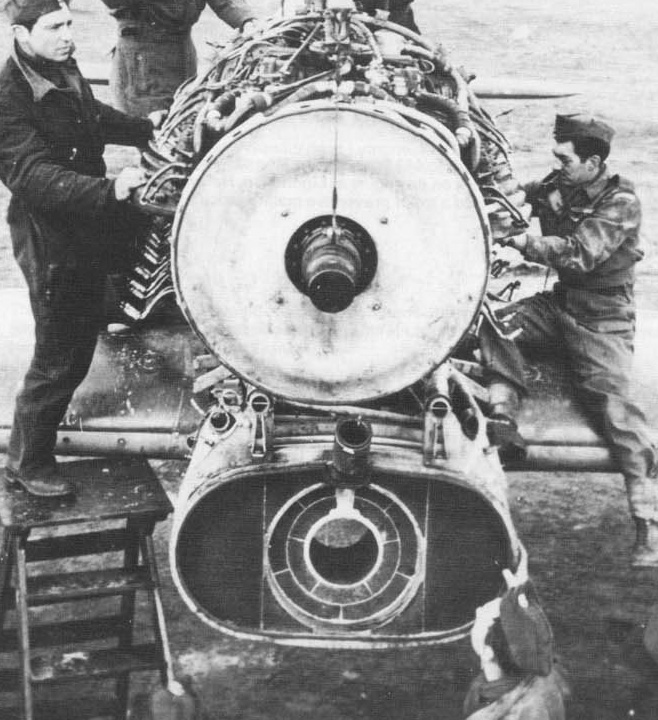
Debris screens (two styles), are not molded well, and in my opinion, would be best left off or replaced, if their use is desired/required.

Prop/spinner
Kit provides three propeller assembly combinations, two three bladed and associated (different), spinners, as well as one four blade with spinner. Quite some possibilities there, so careful attention to reference photos of any specific machine are in order, as either three or four blade can be appropriate.
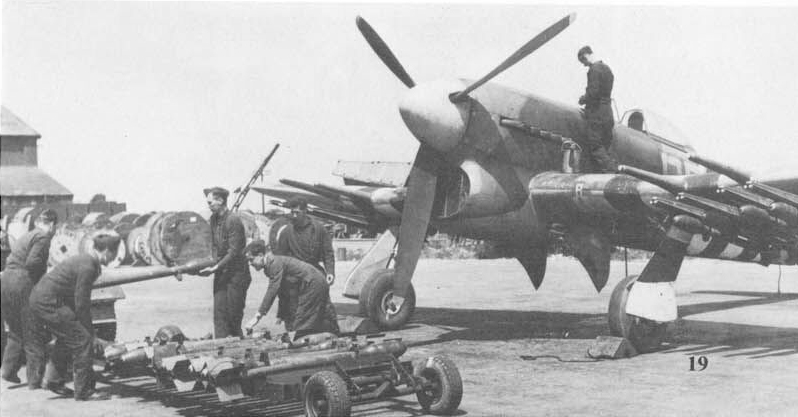
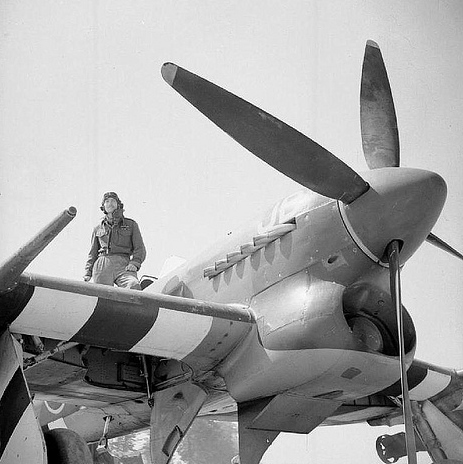
Fuel tanks
Two under wing fuel tanks are provided, and appear to be of correct proportions, though straps may be a tad heavy handed.
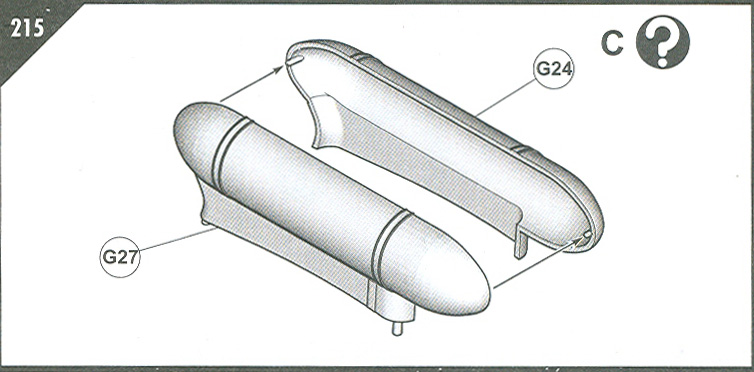
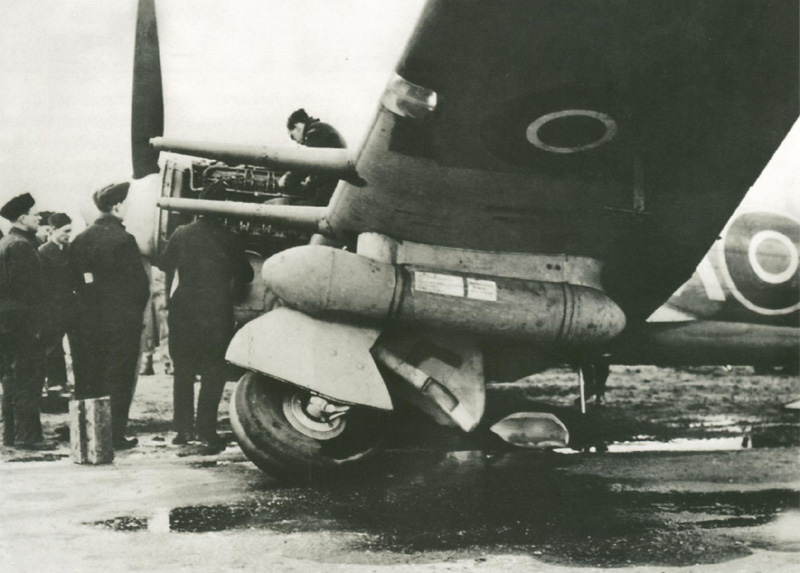
Landing gear, wheels and doors
Outer gear doors (outer surfaces), on my example both have small sink marks opposite the pins that attach them to the inner door face, but no big deal really. Doors seem to be quite accurate, with starboard inner door face having the oval panel that appears correct. Also, both inner door surfaces have a portion of the brake line molded on; some of the more hardcore among us may want to replace that with more three dimensional detail from solder or similar. Additional rivet detail not present on main gear door interiors, once added by the modeler, will greatly enhance these doors.
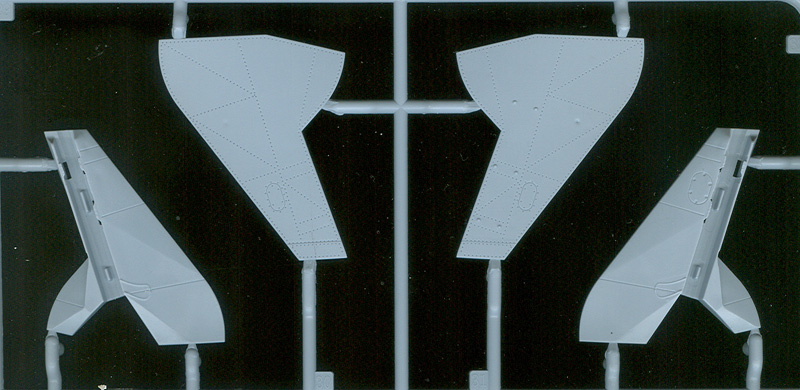
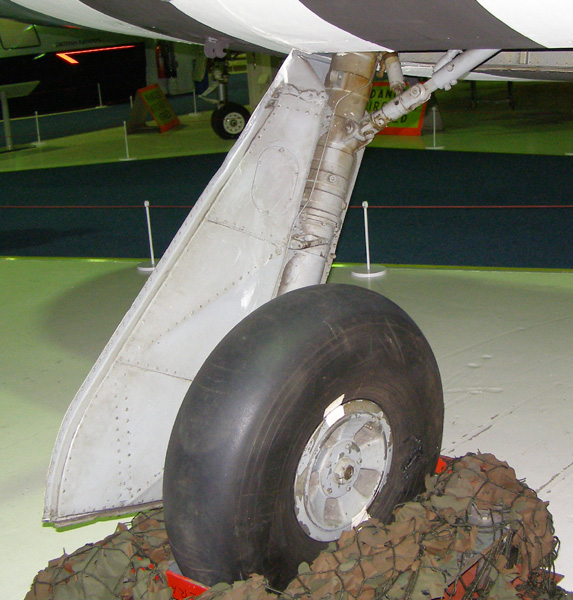
Inner gear doors seem to be very well molded and quite accurate.
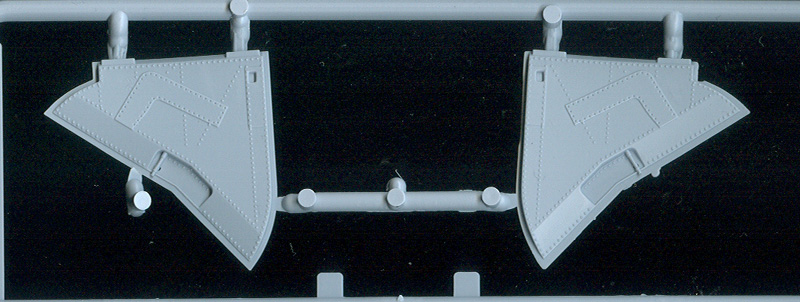
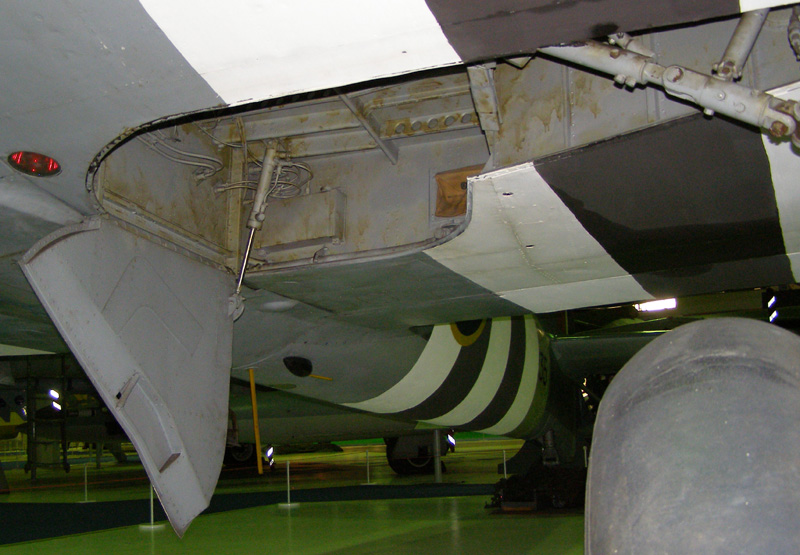
Wheel wells are quite a marvel, and appear to be very comprehensive and accurate (see photos below and above).
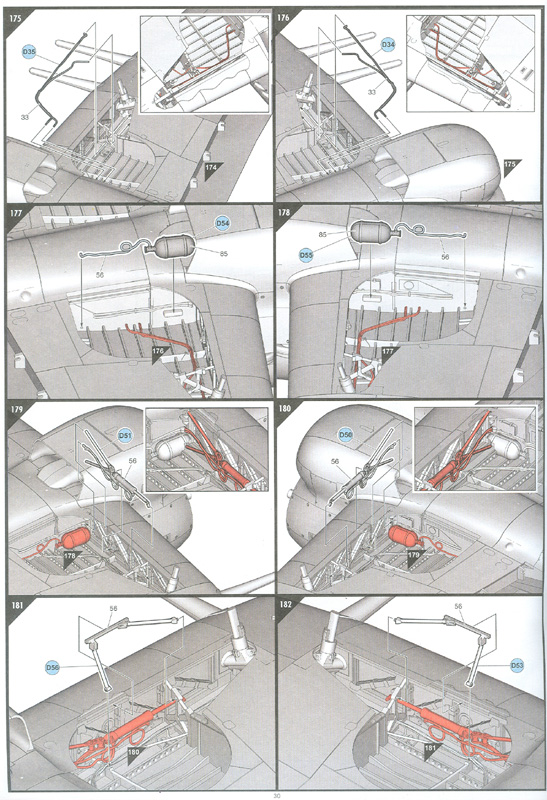
Main wheels look to also be molded excellently, with authenticity readily captured, though tires are again, another weak point, with the very visible ribbing left off entirely. Since this original review was written, both Barracuda and AMS have come to the rescue here.
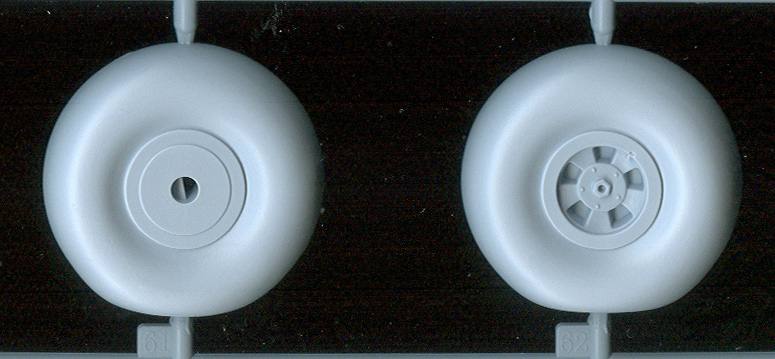
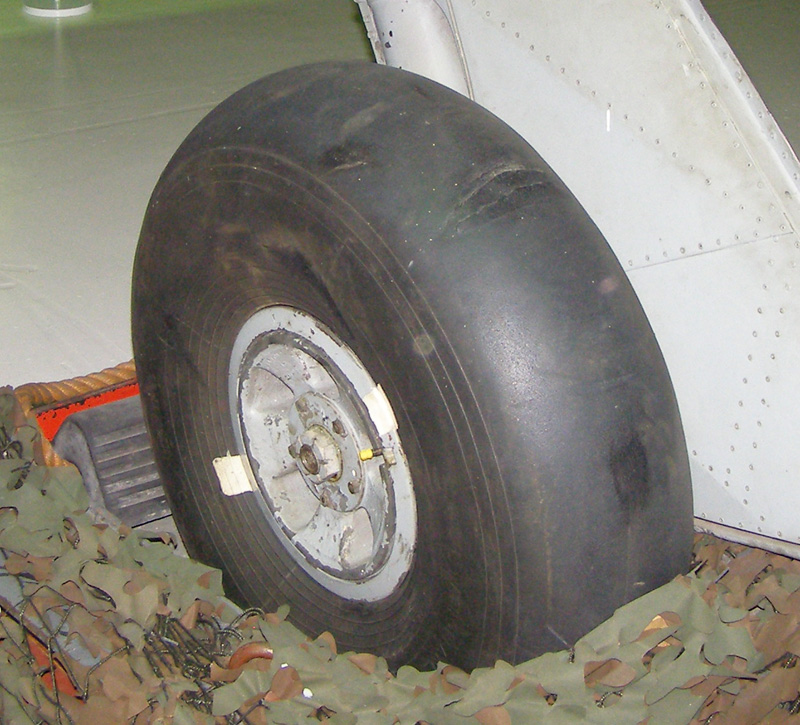
(Photo credits to Ron Patterson (LSP_Ron), for the borrowed museum imagery.)
Weapons
1. Rockets:
Owing to injection limitations, the spring clips that attach the rockets to the rails are just solid chunks. (I assume and hope), that Eduard or similar will come to the rescue here. The warheads themselves have a blunt fall off on the aft end, when all references I can find indicate that these should be a gradual contoured taper. The second and third types of rockets sometimes carried by the Typhoon are nowhere to be found, so the modeler is left to his own devices if those are desired. The dovetail connectors for the stabilizing fins are present, and are delicately represented, as are the fins themselves, if just a tad too thick. All rocket warheads and tubes once screwed together, left a slight raised shoulder on either one (depending on configuration), and therefore a small step between the two should be present, but I believe this is reversed on these rockets, as the shoulder would most normally have appeared on the body, not the warhead.
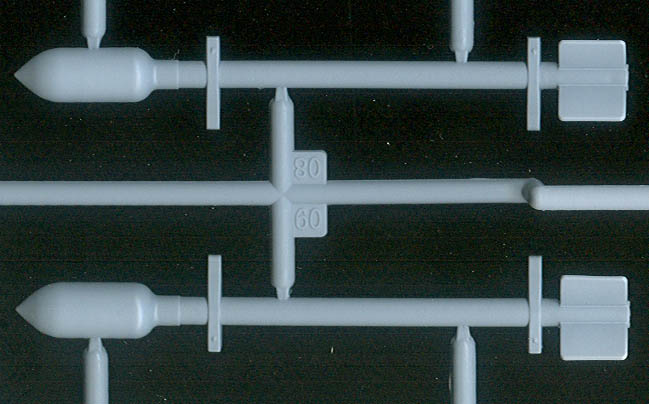
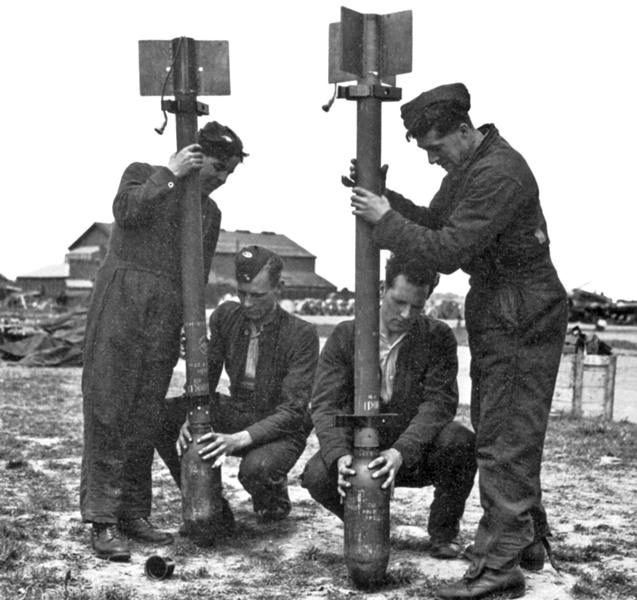
Two different styles of rockets/rails are provided, singe and double rail, though I must confess I've never seen the single rail variety.

2. Cannons and shrouds:
Cannon barrel shrouds are molded as one piece, when in fact there is an inner and outer section to the shrouds, and no attempt has been made to simulate this. My hope (and belief), is that Master will whip up something that will address this issue.
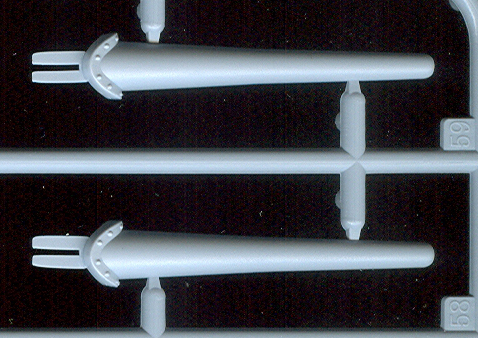
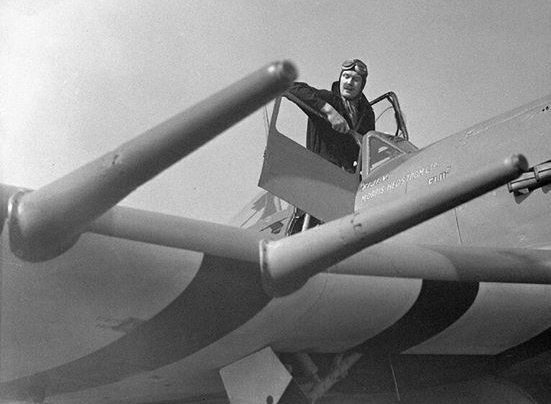
2a. Cannon bays:
Gun bays seem very comprehensive, well detailed, and need no further elaboration. (Too bad I'll probably be doing mine with bays closed.)
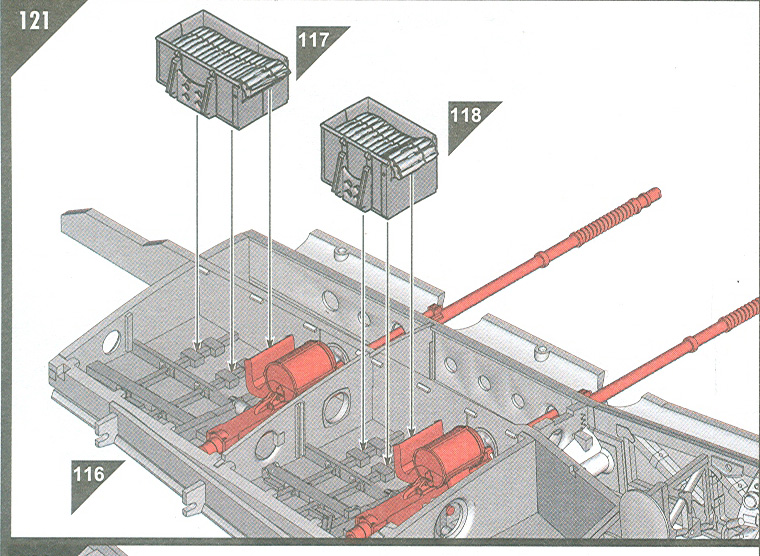
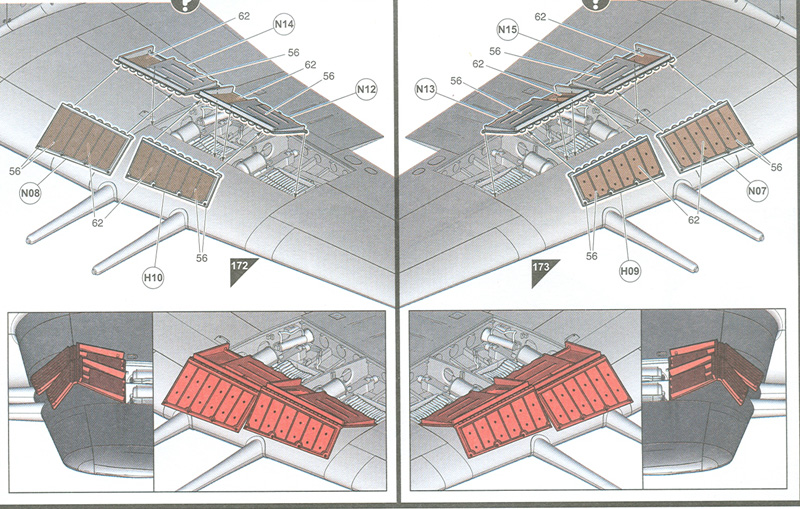
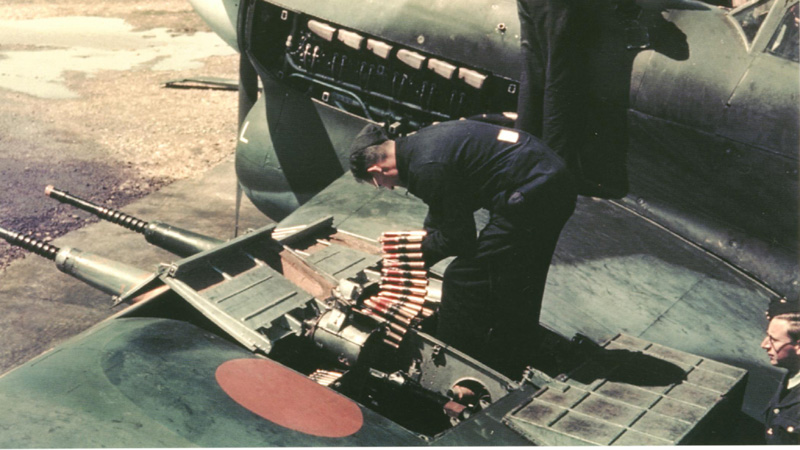
3. Bombs and pylons:
Two sizes of Typical British bombs are provided, and look to be very nicely molded, with fairly delicate stabilizing fins and rings, as well as the larger bomb being provided with a nice nose fuze. Additional detailing combined with some painting trickery could really make them look great.
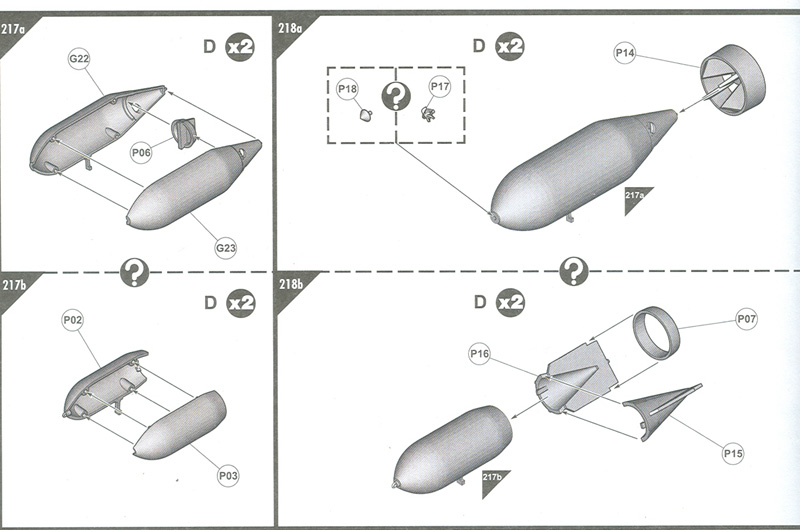
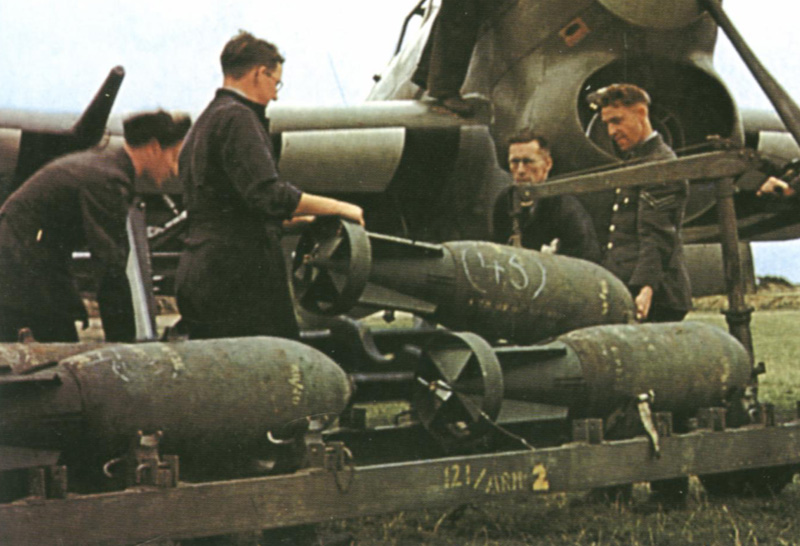
Summation
All in all, I think this is a fabulous effort from Airfix, and I am very pleased with what I've found, and anxiously await the opportunity to begin working on my example. I also expect that the AM folks will jump on when and where needed, to provide us with additional enhancements for this cool kit.
Recommended reading/reference material
AJ Press Hawker Typhoon Part 1
AJ Press Hawker Typhoon Part 2
Squadron Signal Hawker Typhoon in Action
© Kevin Williams 2014
This review was published on Saturday, July 19 2014; Last modified on Tuesday, March 12 2024


